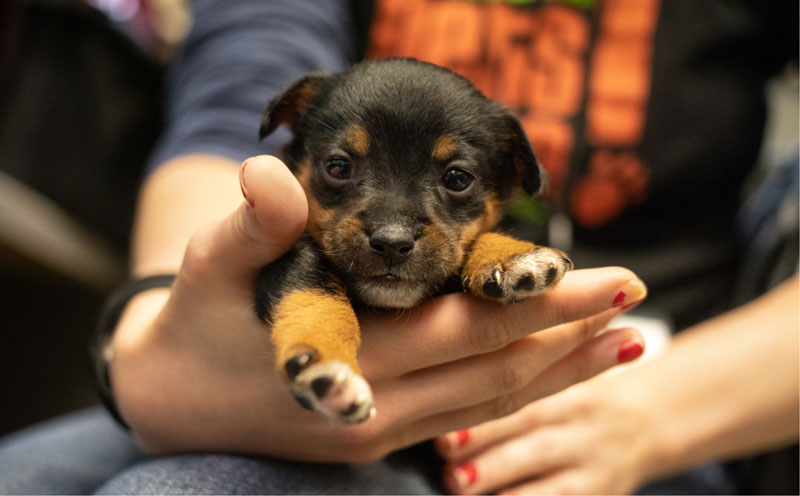Innovative Shelter Program Saves Parvo Puppies and FeLV Cats – and Helps Others Do It, Too
Jen Reeder
A shelter’s groundbreaking initiative to save dogs and cats with dreaded viruses – canine parvovirus and feline leukemia – all started in a veterinarian’s bathroom.
Back in 2008, Ellen Jefferson, DVM, president and CEO of the Texas nonprofit Austin Pets Alive!, got wind of a litter of Border Collie puppies at the municipal shelter who had all tested positive for “parvo,” a highly contagious and deadly viral disease. Traditionally, a diagnosis, or even sharing a kennel with a parvo puppy, has been a death sentence at animal shelters.
“I was like, ‘Well, I’m a vet; I’ll take them,’” she recalls. “With the help of so many people at APA!, we created the parvo ward out of my bathroom. The puppies all lived and a week later, they were up for adoption.”
This was revolutionary because prevailing wisdom was that a “parvo puppy” might shed the virus for up to six months. Shelters couldn’t treat puppies and then quarantine them for six months; it was a logistical impossibility and probably cruel, according to Dr. Jefferson. So APA! used results from a tabletop kit that tests for the viral antigen. Once puppies tested negative, the team bathed them to remove particles from their body and sent them for adoption.
The system worked.
In 2010, the nonprofit moved into a building where they created an actual parvo ward with volunteers and staff associated with it: the Parvo Puppy ICU.
The unit can hold up to 65 puppies at a time and has saved over 7,000 lives – 1,300 in 2022 alone.
“They come to us on death’s door,” Dr. Jefferson says. “We have protocols that work 99 percent of the time to resuscitate them, get them started on the fluids they need, get antibiotics coursing through their body, and start with mini feedings. We see that nine out of ten live.”
Cats with feline leukemia (aka “FeLV”) might not always show signs, but they are often euthanized at shelters because of contagion fears. In 2016, Austin Pets Alive! created the Feline Leukemia Adoption Center. It can hold up to 14 cats, but many volunteers foster the kitties as well.
The Feline Leukemia Adoption Center has saved the lives of over 2,100 cats.
The programs fit neatly with the Fear Free philosophy of reducing fear, anxiety, and stress in pets, shelter animals, and veterinary patients. All APA! staff must complete the Fear Free Shelters course within the first 90 days of employment, and the veterinary team and some medical staff are Fear Free certified.
“We have people coming morning and night to take care of the cats and offer enrichment and love,” Dr. Jefferson says. “Pet owners and community members want animals with illnesses and maladies to be treated. So the work that we’re doing is really just matching what community members and pet owners already expect to have happen in shelters.”
Due to the success of the Feline Leukemia Adoption Center and Parvo Puppy ICU at Austin Pets Alive!, many other rescue organizations have reached out for advice on how to start similar programs. Austin Pets Alive! has national programs for just this reason and offers free resources like a manual and videos of recorded classes to anyone who is interested.
“The national operations arm is really looking at, ‘How can we help you save the pet, instead of all of them coming to us?’” she says. “It’s astronomical the impact that has compared to how much we can physically do with our two hands here.”
Still, those “two hands” have meant a second chance for thousands of dogs and cats who went on to find happy forever homes.
For more information about shelter support at Austin Pets Alive!, visit: https://www.austinpetsalive.org/impact/shelter-support








